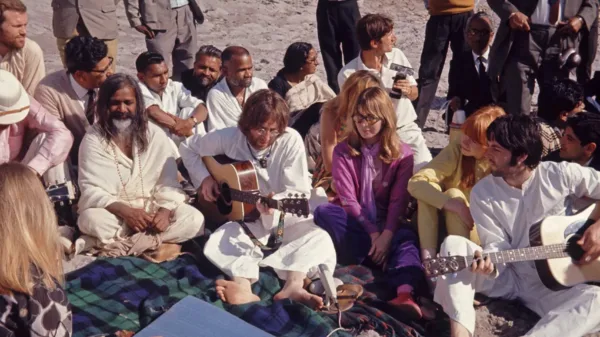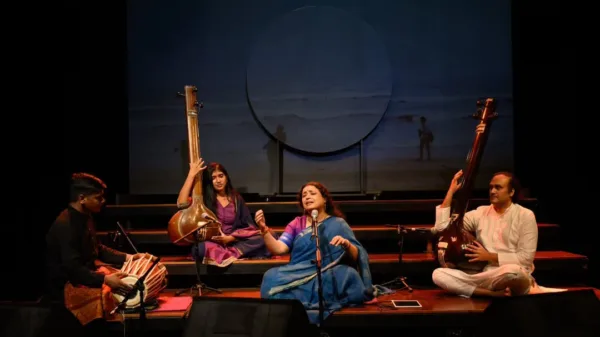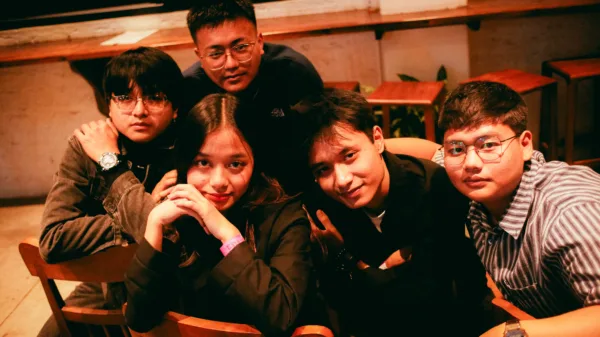Encore ABJ and Calm the two voices that went from underground challengers to the undisputed rulers of the Indian hip-hop scene. Abhijay Negi (Encore ABJ) brought the sharp, unfiltered street wisdom of Jamnapar, while Siddhant Sharma (Calm) was navigating the hustle of a college dropout and a club promoter in Hauz Khas.
Their paths first converged at the legendary Spit Dope Inc. cypher scene in Delhi, co-founded by Encore. Though their initial artistic connection was rooted in the Delhi hip-hop community, a moment of destiny—Calm spotting Encore from his rickshaw while Encore was on a bus, leading to an online message—quickly sealed their fate as partners. Their subsequent evolution, which now spans a full decade, is not just the “wow” story of two local talents transcending the underground, but the very blueprint of how Indian Hip-Hop exploded from a niche subculture to a massive mainstream force, cementing their status as true legends and flag bearers of the genre.
Here are ten definitive ways about how Seedhe Maut came to life and revolutionized Indian hip-hop from within, shaped its cultural shifts, and built a passionate, decade-long following that remains captivated.
1. Rooting Music in Indian Classical Folklore and Poetic Traditions
A significant, less discussed element of Seedhe Maut’s artistry is the profound influence of Indian classical poetic and folk traditions. They have drawn deeply from India’s rich cultural narratives, referencing figures like the legendary poet Ram Dhari Singh Dinkar, whose nationalist spirit and evocative imagery lend authentic gravitas to their work. This embrace of indigenous poetic and folk elements goes beyond mere aesthetics—it is a powerful reassertion of cultural identity within a global genre. In doing so, Seedhe Maut forge a seamless bridge between ancient cultural wisdom and contemporary urban expression, allowing their audience to connect with heritage in a new, dynamic form. This approach distinguishes them from others who rely on surface-level cultural inclusion; Seedhe Maut instead embed these elements meaningfully into the fabric of their storytelling and rhyme schemes, reflecting the complex dualities of modern Indian identity.

2 . Reimagining Lyricism with Depth and Authenticity
Seedhe Maut fundamentally shifted the conversation in Indian hip-hop, providing the lyrical blueprint for its leap from niche subculture to mainstream credibility. Their rhymes are dense with multi-layered storytelling that captures the complex pulse of a rapidly changing nation, tackling social, political, and personal themes.
Their lyrical brilliance lies in its dual power: they masterfully juxtapose the necessary brash confidence of the underground “Kranti” with profound, unexpected vulnerability, giving the audience a transparent look at issues like anxiety and self-doubt “Soyi Nahi,” “MMM/Yaad”
This commitment to both introspective depth and technical mastery, often hailed as a “Rap Masterclass” by critics, is evident across numerous complex tracks. Their flow and wordplay on the hit single “Nanchaku” alongside tracks like “101” and “Dehshat,” proved that Indian hip-hop could be a serious platform for real issues, not mere entertainment. This dedication has elevated the genre’s standard, paving the way for the entire scene to be embraced as a mature, serious art form capable of both mass appeal and critical reflection.
3 . A Collaborative and Innovative Production Culture
Behind Seedhe Maut’s consistently evolving sound lies a vibrant collaborative ecosystem, which is the very engine of their sonic revolution. This approach leverages their platform as a hub for creative experimentation in Indian music. Their revolutionary sound was initially defined by their foundational, long-term partnership with Sez On The Beat, who produced their seminal early work, helping to define the raw, aggressive sound of Delhi hip-hop. However, their commitment to innovation is clear in their national and global outreach, leading to genre-bending collaborations with heavyweight producers like Karan Kanchan and international DJ KSHMR (on the track “Bhussi”). Crucially, this culture is now a generational investment; their self-established DL91 Era has ushered in a new collaborative wave, with producers like Hurricane taking the lead on major projects. By consistently pushing boundaries through these diverse partnerships, Seedhe Maut ensures their music matures sonically, setting an innovation standard that elevates the entire scene.

4 . Pioneering Independent Creative Control Through DL91
Seedhe Maut’s career perfectly mirrors the genre’s mainstream revolution by achieving total creative and financial self-determination. Their initial phase saw them rise to national prominence on the platform of Azadi Records (2017-2023), where they cemented their status with foundational albums. However, their defining move was leaving to establish DL91 Era, a comprehensive creative ecosystem. This pivot was a strategic act of sovereignty, proving that independence is the new measure of mainstream power. Beyond self-control, DL91 operates as a generational investment, immediately elevating a diverse roster of emerging talent, including OG Lucifer, Lil Bhavi, GhAatak, Bhaskar, AB17, and Hurricane. This model establishes Seedhe Maut as industry architects, providing the ultimate blueprint for the next wave of Indian hip-hop to control its own future.
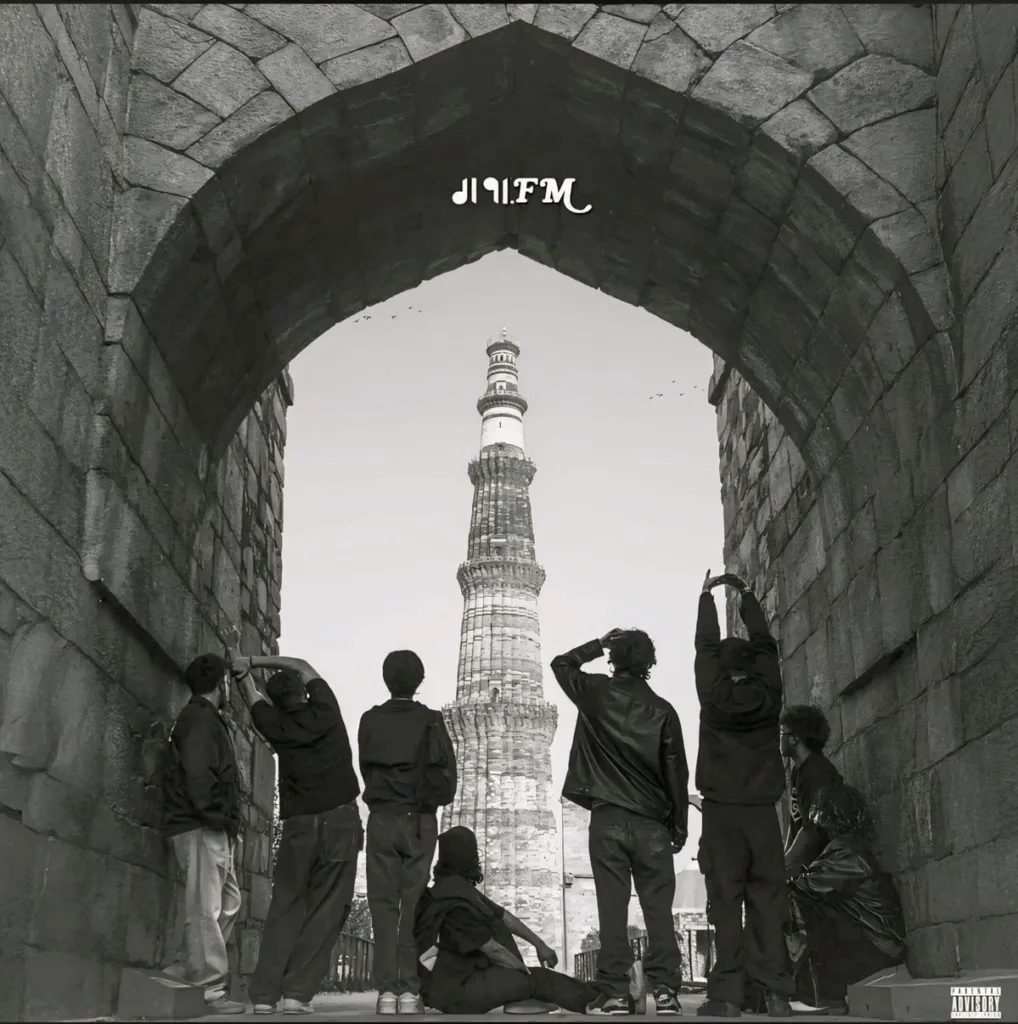
5. A Natural Fusion: Redefining the Authentic Indian Sound
Seedhe Maut’s sonic identity provided the missing link, redefining what authentic Indian hip-hop could sound like. Through the organic and masterful integration of Indian classical instruments and regional motifs with global genres like Trap and Boom-Bap, their music presented a sound that was immediately both globally relevant and powerfully rooted. This balance was not accidental; it was thoughtfully crafted to resonate with a generation negotiating the complexities of tradition and rapid globalization. This fusion is critical because it helped Indian hip-hop shed the long-standing accusations of cultural mimicry. Instead, the duo carved out a distinctive, undeniable genre that proudly wears its cultural lineage, proving that the global sound can be genuinely local.
6 . Collaborations and Exposure That Expanded Their reach
A major turning point in Seedhe Maut’s visibility came through strategic collaborations that expanded their appeal across local and global markets. Their stature was cemented within India’s musical elite with their feature on Coke Studio Bharat performing the track “Holi Re Rasiya,” showcasing their versatility to a pan-Indian audience. Their genre-bending success was fueled by early crossover projects with electronic producer Ritviz, including the hits “Chalo Chalein” and “Roshni,” which merged hip-hop with the wider Indian indie scene. Concurrently, their global credibility is undeniable: their major international collaboration on “Bure Din” with US rapper Mick Jenkins, alongside appearances on platforms like BBC Radio, introduced their hard-hitting sound to global audiences. This power to attract talent at every level continues, evidenced by their most recent high-impact track, “Mudda” with Yung Sammy, a statement of current dominance. These diverse and high-profile partnerships underline Indian hip-hop’s successful emergence on the world stage, transforming the duo into the genre’s key national and global ambassadors.

7 . Balancing Contrasting Moods and Expanding Hip-Hop’s Emotional Range
Seedhe Maut pioneered sonic and emotional duality as a core artistic mandate, ensuring their music had the structural range required for mainstream success. While their lyrics cover deep themes, their innovation lies in the intentional structural split of their projects—a concept beautifully captured by their EPs Shakti reflecting raw power, aggression, and struggle and Kshama reflecting serenity, introspection, and vulnerability
This emotional range was significantly expanded by the 30-track mixtape Lunch Break, which stretched their sound to include themes of mental health, toxic coping mechanisms, and hard-earned happiness. They seamlessly shift between aggressive, high-BPM battle anthems (like “Namastute” and “Batti”) and deeply introspective, melodic tracks, such as the fan-favorite “Pankh” and “Gandi Aulaad”. By embracing this duality, Seedhe Maut created a complete, multifaceted listening experience that reflects the entire spectrum of modern Indian life, successfully bridging the gap between the underground scene and a mass audience.

8. The Chemistry of the Duo and Their Cult Following
The dynamic synergy between Encore ABJ and Calm is impossible to overlook and is the secret weapon behind their sustained relevance. The duo’s success is rooted in their contrasting yet complementary flows—where Encore ABJ brings the unfiltered, aggressive energy, and Calm provides the technical precision and calculated calm—a compelling chemistry that drives their music and electrifies their performances. This unique dynamic is powerfully mirrored by their intense connection with fans. Their avid and fiercely loyal cult following is not merely an audience; they are an active community known as ‘Seedhe Maut Nation (SMN) Every show becomes a sold-out event where the atmosphere feels more like a communal celebration than a concert, renowned for its mosh pits and unparalleled energy. This bond—built on authenticity, aggression, and shared belief—is the defining factor in their decade-long impact, transforming listeners into dedicated participants in the movement.
9. Backing the Indian Hip-Hop Scene with Strategic Brand Associations
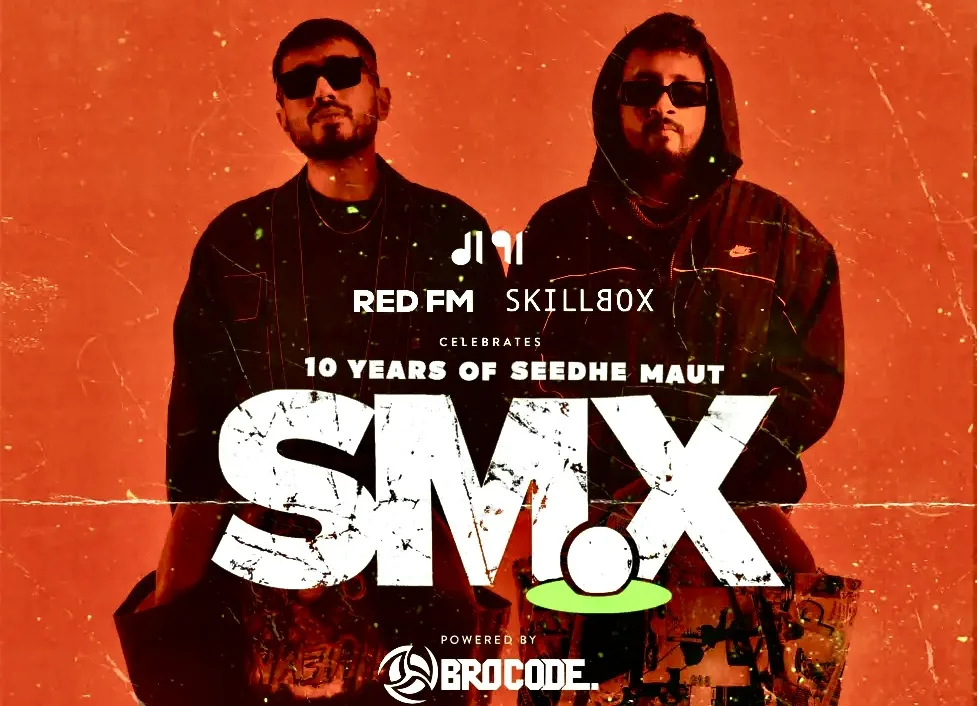
Seedhe Maut’s revolutionary success is proven by its market validation. Their commitment to delivering a powerful, genuinely participatory cultural ritual—from the “mad house” showstopping scenes at Spotify Rap 91 (2025) to their relentless tour schedule—has given them unparalleled market value. This success is leveraged into strategic partnerships, with the ongoing SMX Tour celebrating a decade of their journey supported by major brands like Red FM and Brocode. This ability to form high-value collaborations, maintained with uncompromising integrity like the Knorr India ‘K-POT’ track, is the definitive blueprint for how Desi Hip-Hop can achieve both critical relevance and massive commercial success in the masses.
10. Growth Over Trends: The Ten-Year Staying Power
Seedhe Maut’s sustained dominance is rooted in a foundational work ethic that prioritizes conscious growth over chasing transient trends. They are widely recognised for their relentless output, meticulous attention to detail in their studio projects, and consistent touring schedule. Their career exemplifies the possibility of sustained relevance through thoughtful, intentional evolution of their sound, message, and artistry—always maintaining core values of uncompromising integrity and social engagement. This commitment to their own path, rather than market pressures, is the final key to their success, guaranteeing their longevity and cementing their influence on subsequent generations of Indian hip-hop artists.
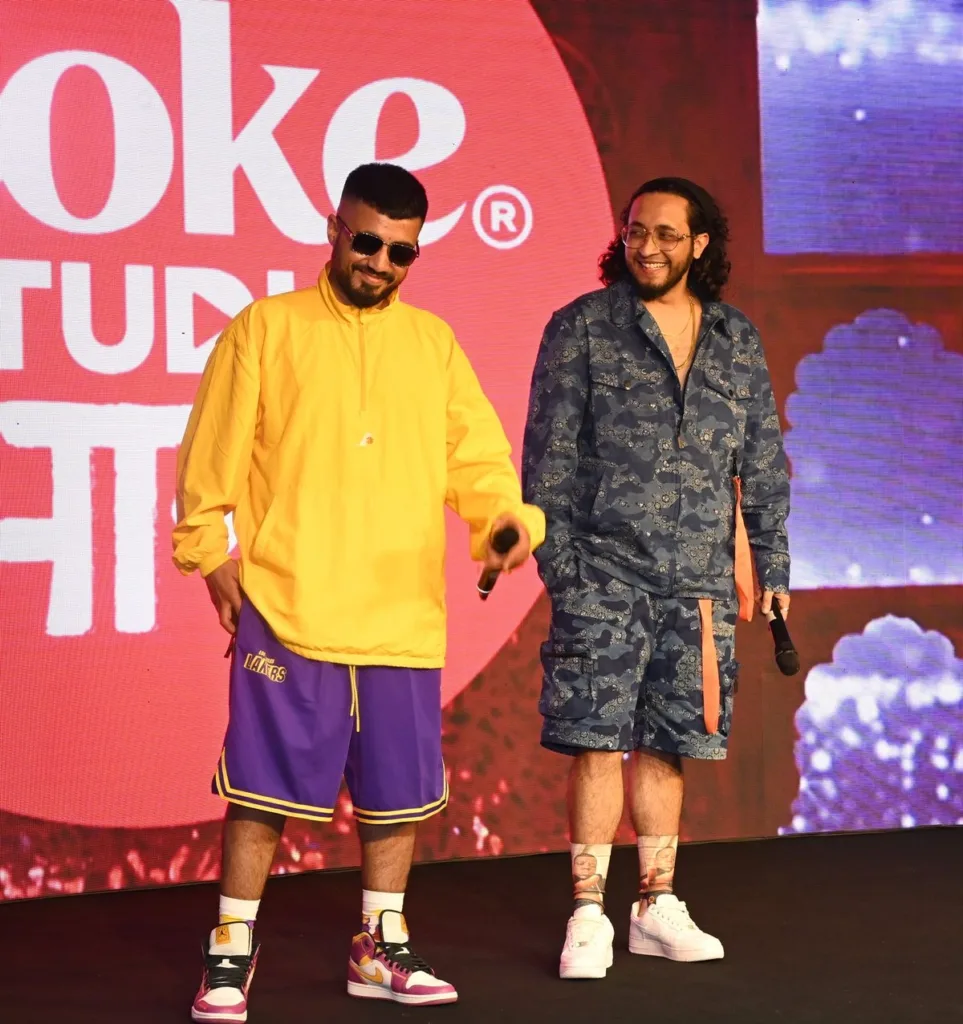
Conclusion: Seedhe Maut’s career exemplifies the possibility of sustained relevance through conscious growth rather than chasing transient trends. Over ten years, they evolved their sound, message, and artistry while maintaining core values of uncompromising integrity and social engagement. This sustained journey parallels the rise of Indian hip-hop—from underground subculture to national and global force—making Seedhe Maut synonymous with the genre’s cultural evolution.
Why are we still talking about Seedhe Maut after ten years? Because their journey is entwined with the rise and transformation of Indian hip-hop itself. Their music, ethos, collaborations, and cultural connections have paved the way for a genre entirely reimagined on Indian terms—now thriving both at home and abroad. Their ten-year story is a testament to hip-hop’s power as a medium for cultural expression, community, and change in contemporary India.















